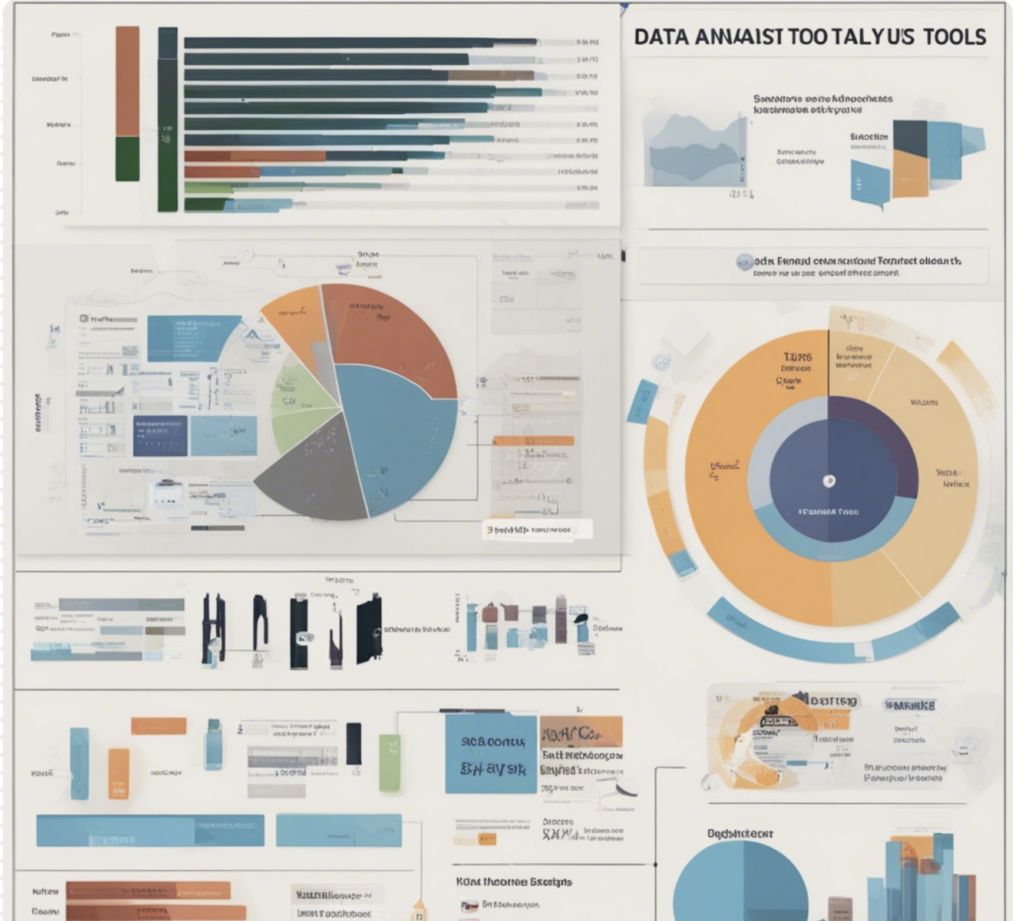Data analysts use a variety of tools and software to perform their tasks efficiently. The tools you should learn can depend on your specific role and the industry you work in, but here is a list of some commonly used tools and software that data analysts often find valuable:
- Data Analysis and Manipulation:
- Python: A versatile programming language with libraries like Pandas and NumPy for data manipulation.
- R: Especially useful for statistical analysis and data visualization.
- Data Visualization:
- Matplotlib: A Python library for creating static, animated, and interactive visualizations.
- Seaborn: A Python data visualization library based on Matplotlib that provides a higher-level interface.
- ggplot2: A popular R package for creating elegant and informative statistical graphics.
- Interactive Data Visualization:
- Tableau: A powerful data visualization tool that allows for interactive and shareable dashboards.
- Power BI: Microsoft’s business analytics service for creating interactive reports and dashboards.
- Plotly: A Python graphing library for creating interactive, web-based visualizations.
- SQL:
- SQL (Structured Query Language): Essential for working with relational databases to extract, manipulate, and analyze data.
- Database Management Systems (DBMS):
- MySQL: An open-source relational database management system.
- PostgreSQL: Another open-source relational database management system.
- MongoDB: A NoSQL database for handling unstructured or semi-structured data.
- Data Cleaning and Preprocessing:
- OpenRefine: A tool for cleaning and transforming messy data.
- Trifacta: A data wrangling tool for cleaning and preparing data for analysis.
- Jupyter Notebook:
- An open-source web application that allows you to create and share documents that contain live code, equations, visualizations, and narrative text.
- Version Control:
- Git: Essential for tracking changes in code and collaborating with others on projects. Platforms like GitHub and GitLab are commonly used for hosting Git repositories.
- Big Data Tools (for handling large datasets):
- Hadoop: A framework for distributed storage and processing of big data.
- Spark: An open-source, distributed computing system for big data processing.
- Hive: A data warehouse infrastructure built on top of Hadoop.
- Machine Learning Tools (if relevant to your role):
- scikit-learn: A Python library for machine learning and data mining.
- TensorFlow and PyTorch: Frameworks for deep learning.
- Statistical Analysis Tools:
- SPSS: Statistical software for advanced statistical analysis.
- SAS: Statistical analysis system used for advanced analytics.
- Cloud Platforms (for cloud-based data analysis and storage):
- Amazon Web Services (AWS): Offers a range of services for data storage, analysis, and machine learning.
- Google Cloud Platform (GCP): Provides tools and resources for data analytics and machine learning.
- Microsoft Azure: Offers a suite of services for data analysis and machine learning.
- Text Analysis and Natural Language Processing (if relevant):
- NLTK (Natural Language Toolkit): A Python library for working with human language data.
- spaCy: An open-source library for advanced natural language processing in Python.
- Data Integration and ETL (Extract, Transform, Load):
- Apache NiFi: An open-source data integration tool for automating data flows.
- Talend: An ETL tool for data integration and transformation.
- Collaboration and Communication Tools:
- Microsoft Excel: Often used for data analysis and reporting.
- Slack: For team communication and collaboration.
- Zoom: For virtual meetings and webinars.
The specific tools you should learn will depend on your career goals, the industry you work in, and the specific requirements of your job. Start with the basics and expand your toolkit as needed based on your projects and career progression.


Hello! I’ve been reading your weblog for some time now and finally got the courage to go ahead and give you a shout out from Houston Tx! Just wanted to tell you keep up the great work!
Thank you a lot for giving everyone such a nice opportunity to read in detail from this blog. It is always very beneficial and also full of a good time for me and my office friends to visit your site at the least three times in 7 days to see the new secrets you have. And indeed, I’m so certainly pleased with the gorgeous tricks you give. Certain two points in this article are completely the most efficient we have all ever had.